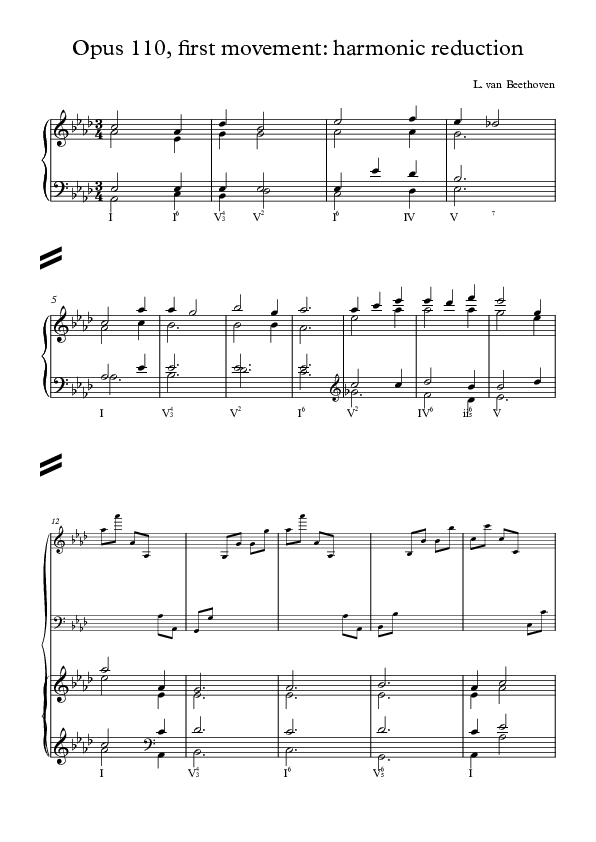2.1 Harmony
2.1.1 Harmonic reduction and improvisation
Preparing a harmonic reduction is often the beginning of an analysis for me. As Caplin argues, the harmony is crucial for determining formal functions in within the Classical style.1 And even in this piece of late Beethoven, this approach seems very valuable to me. These reductions provide insight into the important harmonic processes such as cadences, sequences and modulations. Myself and other pianists often express that an understanding of harmonic and formal structures can also be a great aid in the act of memorization.2 Especially within the sonata form it provides an insight in the different harmonic processes in, for example, the transitions of expositions and recapitulations.
Improvisation always played a certain role in my practicing, but almost exclusively in the form of warming up by playing all kinds of figurations: a free handling of triads and scales. Improvising within a stylistic framework or genre was not part of my training or practicing before the lessons in 'Historical Improvisation' taught by Bert Mooiman at the Royal Conservatoire in the Hague. One of the important tools that Mooiman uses in these lessons is improvising melodies over a figured bass; mostly these figured basses are the harmonic reduction of a repertoire piece. These pieces included for example, a waltz by Franz Schubert or a Song Without Words by Felix Mendelssohn. Then the player must improvise the texture and the melody, but the harmony is fixed. After that we moved on improvising the harmonic progressions as well.


